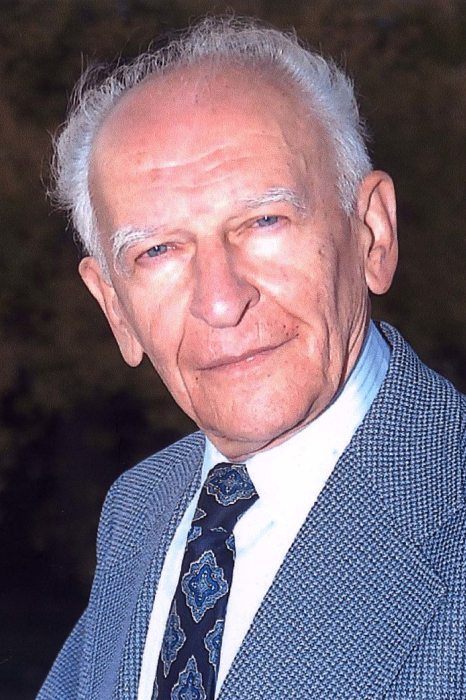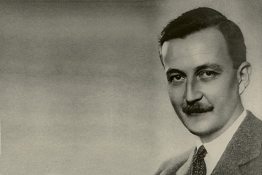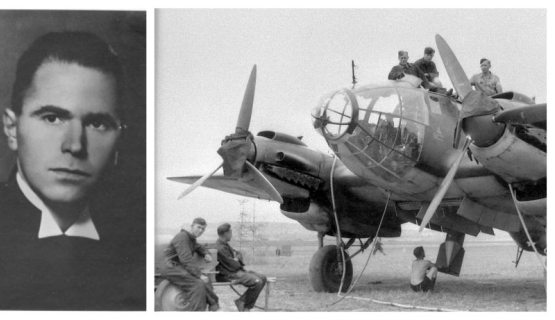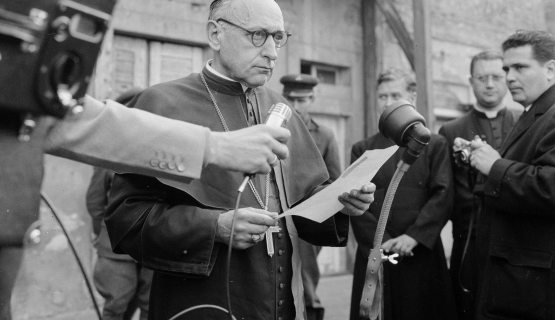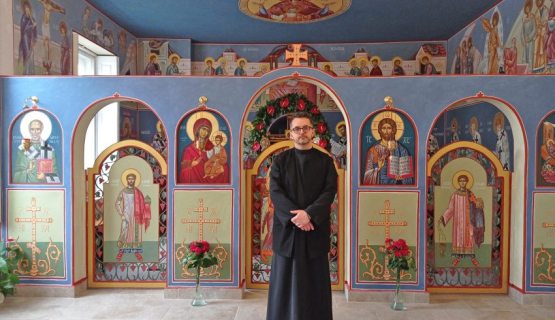Tibor Baranski – The “Hungarian Schindler”, who saved thousands of Jews from death
During the Second World War and the Holocaust, in Budapest, a 22-year-old Catholic priest student saved thousands of Jewish women, children, and men from deportation and death camps in just two months. He was Tibor Baranski. His name is hardly known in Hungary today, even though he risked his own life facing the Arrow Cross and the Nazis in his lifesaving work. "Because I am a Christian, I help the Jews" was his answer when a German officer held a gun to his head and questioned him. His character is commemorated in the award-winning history documentary film Until Death. The film shows us the parallel story of Baranski's heroism and the atrocities of the Arrow Cross monk Father Kun.
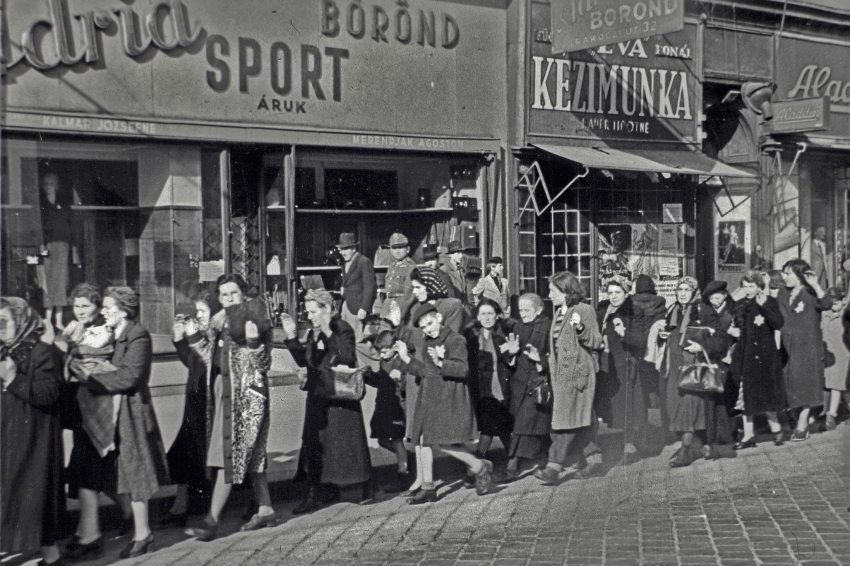
He secured the Letters of Protection one by one
His grandfather was born in Poland, and after serving in the Polish army in Budapest, he decided to make it his new home. Thus, Tibor Baranski's (Baránszky) parents, Rezső Baránszky and Mária Schelnader, met on Hungarian land, and little Tibor was born and raised in Budapest. He became aware of the growing anti-Semitism in Europe while still in high school. He was drawn to the priesthood, so during the Second World War, he studied at the seminary in Veszprém and then in Kassa. However, when the front approached Kassa, he was forced to abandon his studies and the city, returning to Budapest. It was 20 October 1944, and five days earlier, the fascist leader of the Arrow Cross Party, Ferenc Szálasi, had taken power in the country and the Szálasi government had been formed.
When the 22-year-old young seminarian returned home, he was to stay with his aunt. Margit Sterneder worked at the Chinoin pharmaceutical factory in Újpest where she became close friends with the Jewish-born Dr. Hedvig Szekeres and her family. One day Hedvig asked her if her relative could obtain a Vatican passport for her and her family with the help of the Catholic Church.
Tibor put on his priestly attire and went to see Papal Nuncio Angelo Rotta, the Vatican's representative in Budapest.
The Vatican embassy was one of the five neutral countries that issued letters of protection to Jews, and so the Swiss, Swedish, Spanish, and Portuguese embassies, as well as the Vatican, were flooded with queues of people asking for help.
"I was not discouraged. I went to the front of the queue and said I was on official business," recalled Tibor Baranski, who wandered around the embassy until he found the nuncio's office. No one asked what he was doing there, as he was wearing a cassock. He got through to Rotta and persuaded him to give him nine letters of protection, one for each member of the Szekeres family. He got it. Encouraged by his success, he returned the next day to help another family.
The Papal Nuncio granted his request and asked Baranski to rescue fifty people from the brick factory in Óbuda, where Jews awaiting deportation were being held, by means of letters of protection. For the operation, Baranski once again put on clerical clothes, and the Papal Nuncio even lent him the diplomat's car, a Rolls-Royce, bearing the flag of the Holy See. Baranski succeeded, and the Jews who were taken under the protection of the Holy See were released by the Arrow Cross.
"I worked day and night and slept very little"
Angelo Rotta took him in his trust, appointing him as Secretary of the Hungarian Citizens' Protection Department of the Embassy. He also put him in charge of the rescue operations and the Vatican's protected houses. He often even confronted Arrow Cross gangs who raided the houses and disregarded international protection. In these houses, thousands of people survived the period of persecution of the Jews. With the help of his aunt, he distributed medicine, food, and supplies to Jews in hiding. "I worked day and night and slept very little. There were days when I did not have a second to eat," he recalled. - By the grace of God... I had the courage and a talent for organizing."
In several cases, he rescued hundreds of victims from death marches on the way to Austria, usually bringing the rescued back to the capital by train. Once he even went to the Józsefváros railway station, the center of the rail deportations in Budapest, from where forced labour servants were being deported to Germany. The young student priest got into a dispute with the commander in charge of the wagon deportations and managed to get many Jews taken out of the wagons with the help of the Vatican's passes.
According to official figures, he saved 3,000 Hungarian Jewish women, children, and men from death in the nine weeks before the Soviets reached Hungary.
Baranski risked his own life when the Nazis demanded that he stop saving people, but he did not. When a German officer put a gun to his head and asked why he was helping Jews, he replied, "You are either stupid or an idiot. Because I am a Christian, I help the Jews."
Adolf Eichmann (one of the main organizers of the deportations of Jews, often called 'the chief executioner of the Third Reich') once called him on the phone and told him that only 3,000 of the 12,000 letters of protection previously authorized by the Nazis would be accepted. Baranski did not know who he was talking to, so he told Eichmann: "I thought I was talking to a German officer, not a German scoundrel."
Convicted in a showcase trial
Those who did not have valid letters of protection were hidden in caves and old houses used as wine cellars. "By doing so, we were able to protect 8000-12,000 Jews," he said. He handed over to the Nazis and the Arrow Cross fake but official-looking life-saving documents and used every trick in the book to save as many as possible.
Captured by the Soviets in December 1944, he was forced to march 260 kilometers toward a Soviet prison and was only given food four times in 16 days. Finally, a well-meaning guard rescued him and he was allowed to return to Budapest. After the war, he completed his studies and was ordained a priest, but his troubles did not end there.
In 1948 he was sentenced to nine years in prison by the communists in a showcase trial for "clerical reaction". He was released after Stalin's death in 1953.
He was as much against communism as he was against Nazism, so he left Hungary in 1956 and also left the priesthood. He eventually settled in the United States and started a family with his Hungarian wife. His courage and self-sacrifice were recognized by the Righteous Among the Nations Award by the Yad Vashem Institute in Jerusalem in 1979. This is the highest honour given to non-Jews who have risked their lives for Jews. In 2013, he was awarded the Hungarian Order of Merit in Hungary. He died in his family home in Buffalo, New York, in January 2019, at the age of 96.
His heroism on screen
His story and his lifesaving activities are little known in Hungary, but Gergely Mózes's historical documentary Until Death (Mindhalálig) intends to change that, not only by honoring the memory of Tibor Baranski but also by contrasting his heroic and bold actions with the atrocities of a bloodthirsty antihero, the Arrow Cross monk Father Kun. The film is a parallel story of a Catholic priest's student and an Arrow Cross monk in the 1944 siege of Budapest. The intertwined story of the lifesaver and the war criminal is relevant in every way, not only locally, but also globally, in a world burdened with problems and prejudices.
The 46-minute film includes fiction and live-action scenes, as well as interviews with experts, including historians Krisztián Ungváry and Sándor Szakály. The television premiere of Until Death was last year. At the end of April this year, the film won the Best Short Documentary award at the 3rd International Historical Film Festival in Pápa. It will next be screened at the 16th Kecskemét Animation Film Festival from 21-25 June.
Father Kun, the mass murderer
But who was Father Kun? Born András Kun, a Minorite monk, he was a member of the Arrow Cross Party during their reign of terror and took part in the torture and execution of many Jews, committed robberies and other crimes. In the "holy name of Christ", he commanded fire and increased the terror among the people in Budapest, the newspapers of the time wrote.
During his interrogation, he confessed to the murder of 500 people but later denied it. According to the indictment, he was the deputy leader of the Arrow Cross Party's reprisals in District XII and was involved in almost all the actions that took place in the district.
It was he who led the large-scale raid in the area of Nagyatádi Szabó Street and Paulay Ede Street, during which 700 Jews were arrested and executed. He was also responsible for the execution of patients at the Maros Street and Városmajor Street hospitals. He is responsible for the lives and blood of hundreds of innocent people, some executed by his own hand, others by a gang under his leadership.
When he joined the Arrow Cross, the Archbishop suspended him, i.e. excluded him from the ties of the Church, but he continued to wear the cassock and use the title of priest - illegally. "When I was in civilian clothes, I carried a hand grenade, a revolver, a submachine gun, and a truncheon, but over my cassock, I wore 'only' a revolver," he said at the People's Court hearing of his trial. The 33-year-old man was sentenced to death by hanging, which was carried out on 19 September 1945.
Resources used:
- https://www.academia.edu/44709073/Kun_p%C3%A1ter_elfog%C3%A1sa_kihallgat%C3%A1sa_t%C3%A1rgyal%C3%A1sa_%C3%A9s_kiv%C3%A9gz%C3%A9se
- https://en.wikipedia.org/wiki/Tibor_Baranski
- https://hdke.hu/baranski-tibor-1922-2019/
- https://www.jta.org/2019/01/23/ny/remembering-a-holocaust-hero-uncle-tibor-to-me
- https://hu.wikipedia.org/wiki/Kun_Andr%C3%A1s
- http://embermentok.eletmenete.hu/baranski-tibor-0
